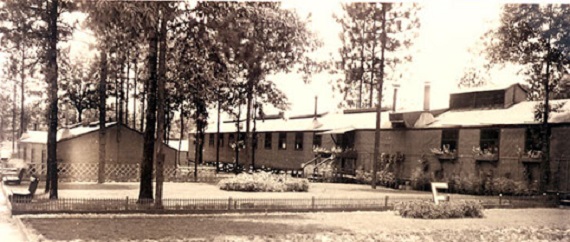I have written here before about my beloved hometown of Tuskegee, Alabama. Forgive me if you’ve read this before, but Tuskegee was unique among small rural Southern towns because of its large, well-educated, and fairly empowered Black population. I wish I could find the reference source for this data, but years ago I read that the Black-to-White ratio in Tuskegee in 1960 was 11-to-1. The principles established by the great American educator and philosopher Booker T. Washington at Tuskegee Institute were embedded in the Black population of Tuskegee, and although they obviously struggled with statewide Jim Crow laws, they were an established economic force in Tuskegee. A devastating Black boycott of White-owned businesses in Tuskegee in the 1950’s concerning a gerrymandering issue (Gomillion v Lightfoot) guaranteed that Whites recognized the survival necessity of treating the Black population with dignity and cooperation. To say that Whites thrived in Tuskegee by keeping Blacks suppressed and subdued is to be ridiculously naïve of the reality of the situation. Anyone who approached business that way in Tuskegee would have starved. It was truly an amazing symbiotic relationship between both communities for the time – well, for any time, really. That’s why I get a little upset when I see blanket historical anecdotes related to the Civil Rights struggle that are just outright lies intended to rewrite history to fit a forced, false narrative. For example, take the German POW situation in the South during World War II.
There was an Army Air Base in Tuskegee during World War II, and that was where the famed Tuskegee Airmen trained. No matter how long I live, I will be forever in awe of those brave men who were giants that walked among us, and I don’t think we should ever run out of ways to honor those incredible immortal flyers. God bless the Tuskegee Airmen. Located 30 miles away from Tuskegee in Opelika, Alabama, there was a very large German POW camp (Opelika was a major railroad hub), which meant that prisoners were frequently seen in and around the Army Air Base in Tuskegee. Therefore, it would be correct to state that during World War II, there was a large German POW presence in the Tuskegee area. That much is definitely true. The problem is that TIME Magazine has published two different articles in the past four years describing how German POWs were treated better in the South than Blacks, and it is simply not true. Not in Tuskegee, anyway.
I understand that part of the plan for treating German prisoners so well in America was the reciprocal treatment American prisoners would hopefully receive from the Germans, and it worked. Although the civilian residents of German concentration camps certainly suffered brutal inhumanities, there were no American prisoners placed there, so their situation was much better. The Germans always treated captured military personnel fairly decently, and in America, we did the same. Although German prisoners were certainly used for hard labor in farm and logging work details, their treatment was decently humane. They weren’t abused, they were fed three square meals a day, and after the war, they went home healthy. Lately, however, it has become kind of trendy to take that concept and run with it, and project all kinds of questionable details and suppositions by comparing the treatment received by German prisoners with the South’s treatment of Blacks under Jim Crow. Both articles by TIME hinted at anecdotes describing how captured Nazis (always Nazis for melodramatic effect, never just Germans) were able to enjoy quite a bit of liberty in the South, and freely eat in restaurants and attend movie theaters that were off-limits to Southern Blacks. I’m not so sure about that…
Therefore, I decided to look into it myself. Although I didn’t have the same vast resources of primary historical documents available to me that TIME was able to exploit, I did have one advantage they apparently didn’t pursue – talk to people who were actually there. My concern was not what happened anywhere else – just Tuskegee. I wanted to know if Nazis were actually allowed liberties in Tuskegee, Alabama that local Blacks could not enjoy. The answer I received overwhelmingly was “Hell, no.”
My mother was 12 years old when World War II ended, and she said she has no memories of Germans either in the restaurants or in the movies, or anywhere in downtown Tuskegee for that matter. Tuskegee only had one movie theater, and it was right next door to our family clothing store, so she would remember if Germans enjoyed evenings at the cinema. She said that she definitely remembers seeing German prisoners working out in fields and along roadways, but NEVER in town. Also, the Tuskegee Theater didn’t ban Black citizens from attending the movies – it just forced them to use a separate entrance and sit separately in their own section as required by statewide Jim Crow laws. Therefore, if any German POWs went to the movies in Tuskegee, they wouldn’t be enjoying any liberty not already available to Tuskegee’s Black population – including the separate seating, presumably. I also talked to a woman whose family owned a little general store outside the city limits, and she said the German work crews (accompanied by heavy security) would be allowed to occasionally stop at their store at the end of the day for drinks, candy, and chips. She remembered them being extremely polite and well-behaved. She also remembers the store’s daily Black clientele behaving the exact same way.
A cousin of mine who’s father was stationed at the Tuskegee Airfield as a flight instructor said he never heard of any such story about the German prisoners, although his father told plenty of stories about the Tuskegee Airmen. Before he passed away, my own father told me many stories about the Tuskegee Airmen, but curiously, he also never told a single story about any German prisoners in downtown Tuskegee. I spoke with people who remembered the Germans working farm fields and logging stands in the general area, and they were occasionally allowed to get water from farm wells. However, any citizens, especially kids, were never allowed anywhere near the prisoners by their guards. Plus, the local families were rightfully a little nervous, and didn’t really need to be told to keep their families at a distance.
Everyone that I contacted told me essentially the same thing – although the German prisoners worked in crews outside of town where they were frequently seen, they were never seen IN town. They were always dressed in POW uniforms which were clearly marked, and they were always heavily guarded. They were never seen anywhere unguarded, and they were certainly never seen enjoying themselves freely out and about. If for any reason they had ever appeared in downtown Tuskegee, it wouldn’t have gone unnoticed. Even the people who didn’t actually see it would have heard all about it from those who did.
I suspect that this is a much better make-believe story than historical fact. It’s one of those unfortunate things that people who have never visited the South would want to believe about the South, but have no accurate basis for doing so. And I also suspect that the experiences of the citizens of Tuskegee with German prisoners during World War II was no different than other communities throughout the South. For anyone looking to drive a racial agenda with a false narrative, it’s the perfect made-up story. For anyone seeking the truth, it just didn’t happen that way.







